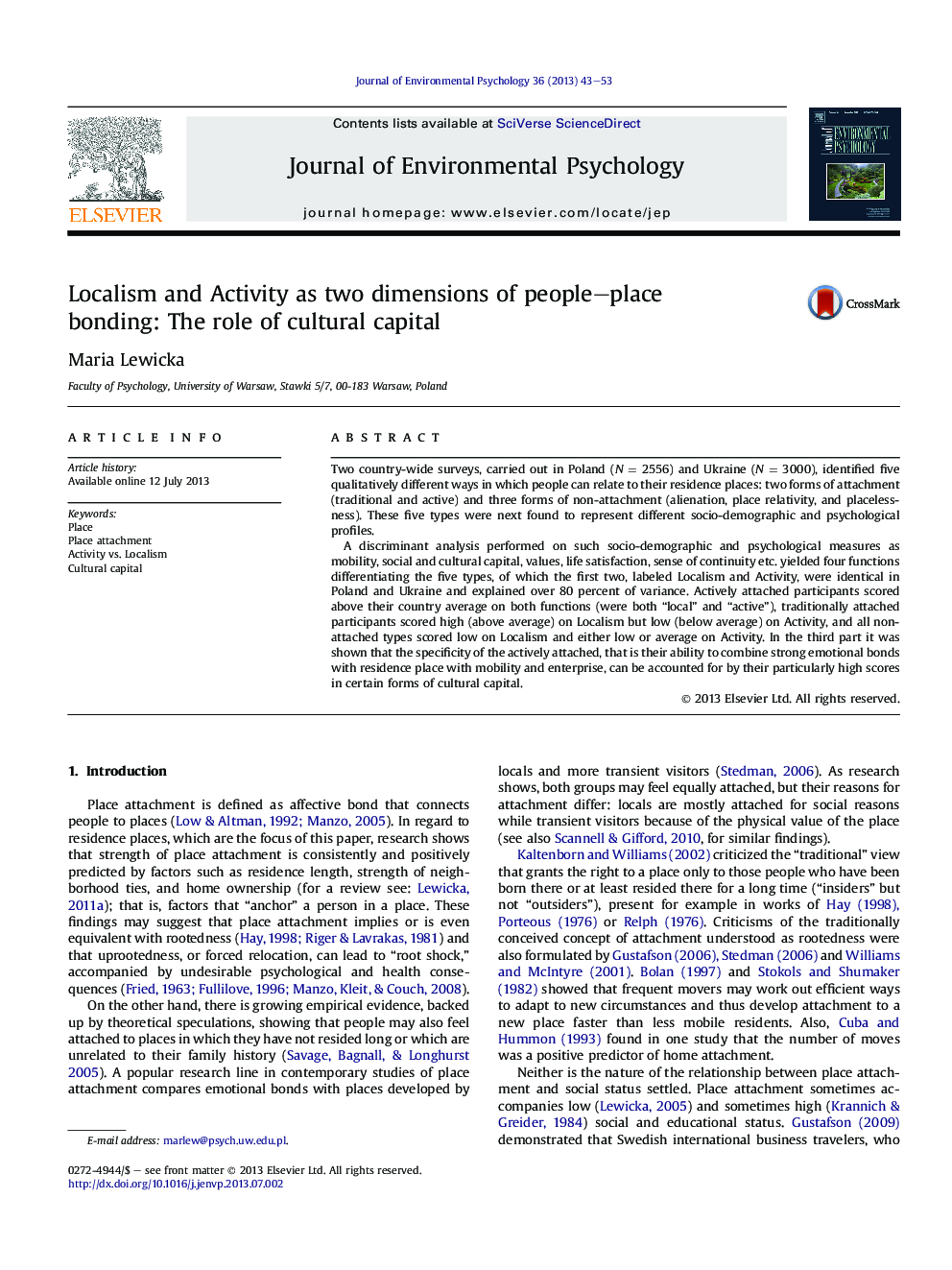| Article ID | Journal | Published Year | Pages | File Type |
|---|---|---|---|---|
| 7246466 | Journal of Environmental Psychology | 2013 | 11 Pages |
Abstract
A discriminant analysis performed on such socio-demographic and psychological measures as mobility, social and cultural capital, values, life satisfaction, sense of continuity etc. yielded four functions differentiating the five types, of which the first two, labeled Localism and Activity, were identical in Poland and Ukraine and explained over 80 percent of variance. Actively attached participants scored above their country average on both functions (were both “local” and “active”), traditionally attached participants scored high (above average) on Localism but low (below average) on Activity, and all non-attached types scored low on Localism and either low or average on Activity. In the third part it was shown that the specificity of the actively attached, that is their ability to combine strong emotional bonds with residence place with mobility and enterprise, can be accounted for by their particularly high scores in certain forms of cultural capital.
Related Topics
Social Sciences and Humanities
Psychology
Applied Psychology
Authors
Maria Lewicka,
